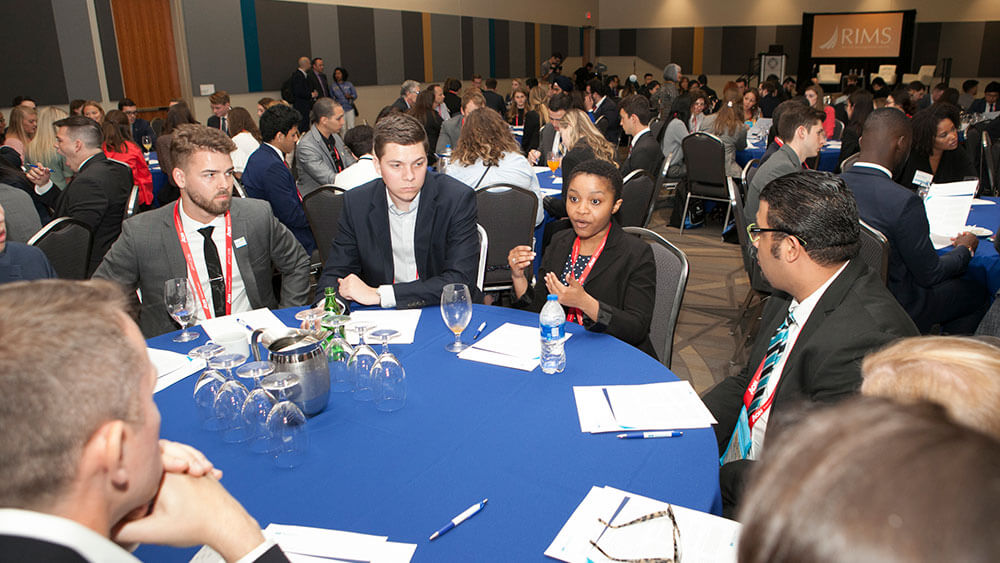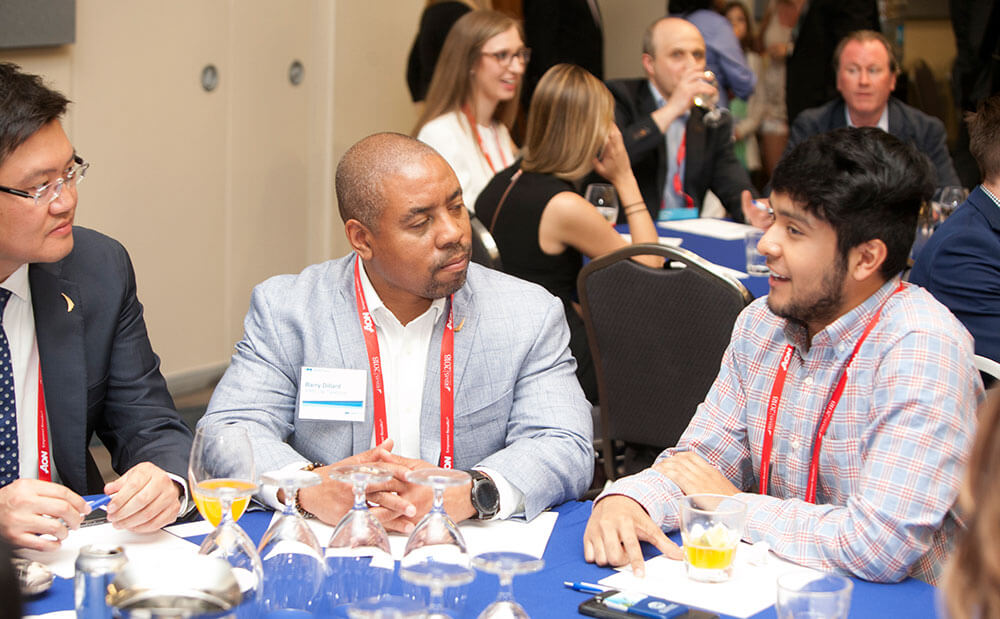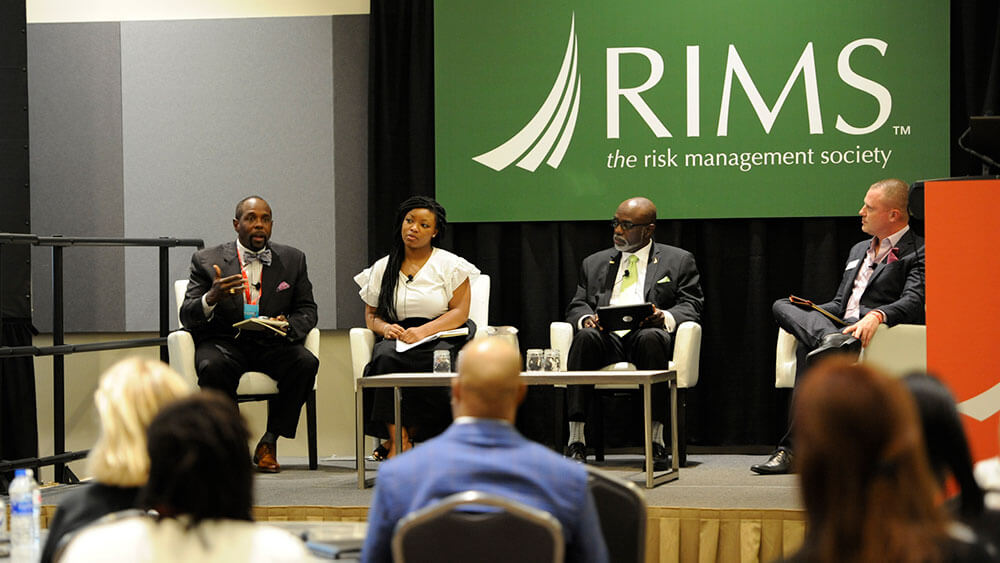
When multiple women who attended the Risk Management Society conference in 2017 said they felt marginalized, organizers made changes for 2018.
After wrapping up what he felt was another successful Risk Management Society (RIMS) conference in 2017, RIMS vice president of events and education, Stuart Ruff-Lyon, CMP, DES, got some disturbing feedback: Multiple women said they had felt out of place at the event.

Stuart Ruff-Lyon
“They said they felt uncomfortable being in places, which for me was sort of a dagger through my heart,” Ruff-Lyon said. As a gay man, Ruff-Lyon said that he knew all too well the feeling of being otherized at events. “I think of our event as being so welcoming and all-inclusive, but then it really occurred to me that I couldn’t put myself in the shoes of an African-American woman walking into the RIMS conference experience for the first time to know what it was like [for her].”
A New View
The feedback motivated Ruff-Lyon to make plans so that none of the 9,500 attendees at this year’s conference would feel left out. “It made me step back and start thinking of things in a different way to ensure that we were doing all that we could,” he said, “to foster a sense of community and inclusion at our event.”
That change had to start at the top. After he shared the feedback at a RIMS board meeting this past January, the organization formalized a task force made up of staff and board directors to examine how RIMS could better embrace diversity and inclusion.
The organization put its intentions on full display the first day of the RIMS 2018 Annual Conference & Exhibition, held April 15-18 in San Antonio, Texas. In addition to hosting the typical attendee orientation, RIMS also planned a diversity meet-up in collaboration with RIMS 2018 sponsor Marsh, which served as both a networking opportunity and an educational session for people of diverse backgrounds and allies alike. At this kick-off event held before the opening reception, attendees were organized in discussion groups and given prompts about individuals the risk-management industry could better include — such as women, members of the LGBTQIA community, and racial minorities.
Topics included challenges facing specific groups of people, and what current strategies are being implemented to improve those problems — “just some conversation to help guide our society with our diversity and inclusion efforts,” Ruff-Lyon said. The discussion groups — which included 250 members ranging from students to experienced risk-management veterans — then reported their answers to the room in a professionally facilitated discussion.
While the organization is still in the process of mining the data from these discussions and looking for the best ways to share it with members, the hope is to convert feedback from that diverse pool of members into content, such as webinars and case studies, that will place members in the shoes of those who have had different experiences in the industry than them due to their race, sexuality, etc. “[The content] is really going to be about helping our members to develop more cultural sensitivity and just to be aware of it,” Ruff-Lyon said. The content will also aim to help those who have felt left out of the conversation thus far feel less alone. “We’ll be looking to dive deep into the career journeys or the experiences of groups of diverse people to help [individuals in those groups] build their careers and to advance professionally,” he said.

Attendees from diverse backgrounds chat during a diversity meet-up at the RIMS 2018 Annual Conference & Exhibition.
Changing the Conversation
In order to show its commitment to a more inclusive community event, RIMS 2018 also incorporated the topic into its programming, with sessions like “How to Handle LGBTQ Issues with Cultural Sensitivity” and “The Journey of the African American Insurance Professional: Past, Present and Future.”
“We really wanted to look at giving this broad opportunity for learning and engagement around the issue of diversity and inclusion, which is becoming increasingly important to all industries, but specifically, I think, to insurance and risk management,” Ruff-Lyon said. “If you think about that term ‘risk management,’ it’s applicable to every aspect of business in some way or another. If you want to be a seasoned professional, it requires [interactions with] diversity of thought on risk-management teams.”
Though the organization’s efforts for change were well-received at RIMS 2018, Ruff-Lyon said there is much more work to be done. “How do we apply diversity and inclusion to all areas of the events? For example, that needs to extend to speaker lineups and things like that. It’s easy for me as an event strategist managing this event to ensure my keynotes are properly diverse,” he said. “But we also need to focus on extending the idea of diversity and inclusion to the rest of our education program and ensuring that we have a balance of men and women and different perspectives [at sessions and panels]. That, I think, is going to be next on our list as we look forward to the future.”

Speakers discuss diversity issues during a RIMS 2018 session. RIMS incorporated sessions like “How to Handle LGBTQ Issues with Cultural Sensitivity” and “The Journey of the African American Insurance Professional: Past, Present and Future.”
Addressing the Issue
After receiving feedback about attendees feeling otherized at RIMS 2017, Stuart Ruff-Lyon jumped into action to ensure the next conference would feel welcoming to all members. Here, he shares three steps organizations can take if faced with similar feedback:
- Pay attention to feedback, even if it’s uncomfortable. “In my situation, I heard this [feedback] and I immediately wanted to contact the person to find out more,” Ruff-Lyon said. Instead of shying away from the negative feedback, Ruff-Lyons dove in to their specific concerns, and brought it to leadership’s attention, he said. “If you’re hearing something [negative], you need to bring it up. Not just as an event professional, but as an association professional, we have an obligation to ensure that our customers, our members, our attendees feel like they have a place and that they’re welcomed by our services and at our events,” he said. “So if you hear that somebody’s not, that’s an important issue to address.”
- Make an effort to address inclusivity and diversity in all aspects of your event, even if you don’t have a fully formed strategy in place. “Be mindful of how diverse your speakers are — that’s an important one,” Ruff-Lyon said. “And also, I think people need to be mindful of their marketing efforts. For example, this year I created a video that was highlighting something new at our conference and it took an African American person to tell me, ‘Wow, there wasn’t one person of color in that video.’ Do your marketing messages portray a welcoming and diverse lens for the event?”
- Keep the conversation going — both with members and internally — throughout the year. “That’s why we have a task force now that [comprises] some of our board members, and a lot of industry people, members, and non-members too, I believe. It is just trying to give us the right guidance and the right lens to operate through,” Ruff-Lyon said. “The important thing is, it can’t just be one conversation. It has to be an ongoing effort and it has to be interwoven throughout the entire business model.”
To learn more about RIMS 2018 Annual Conference & Exhibition, visit rims.org/RIMS2018.
